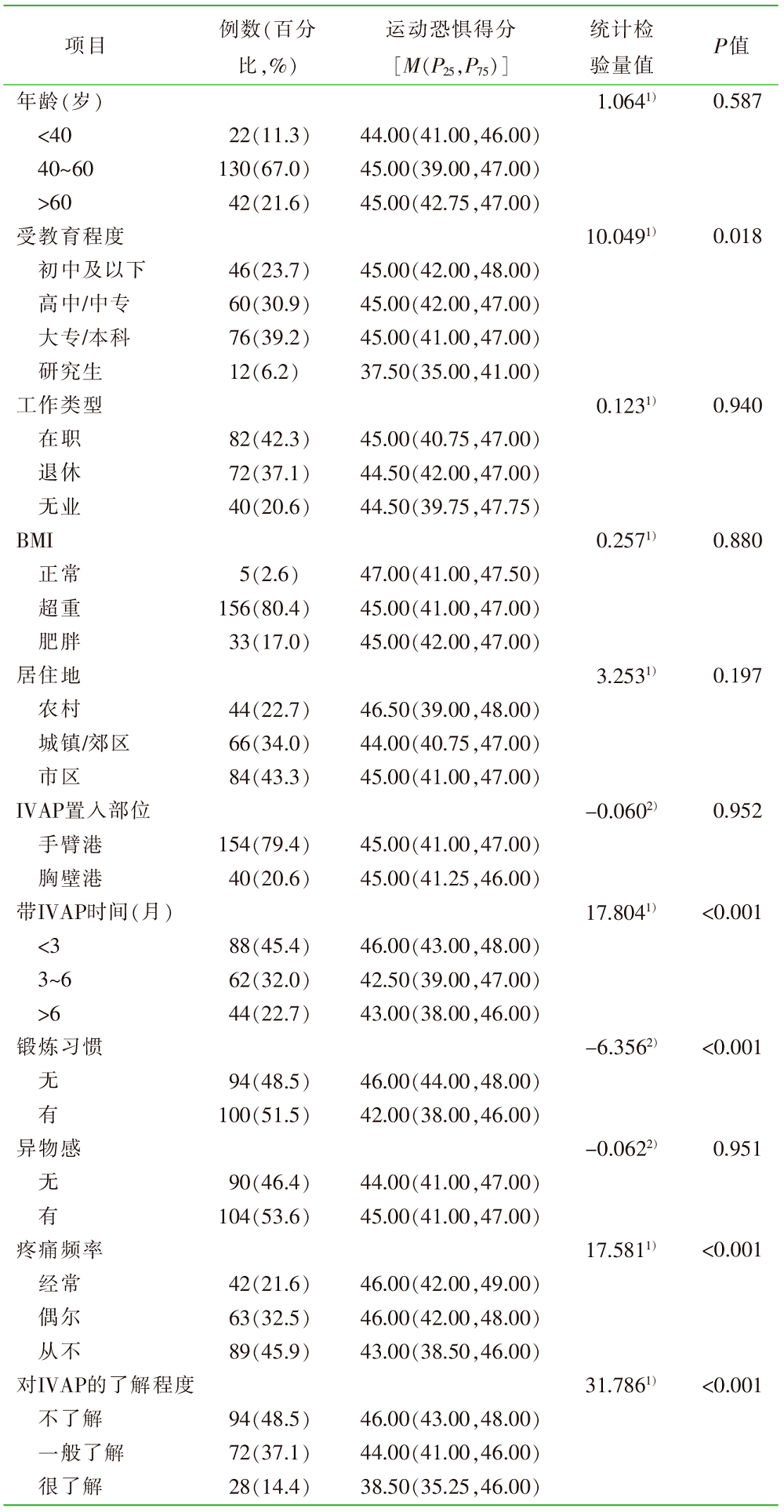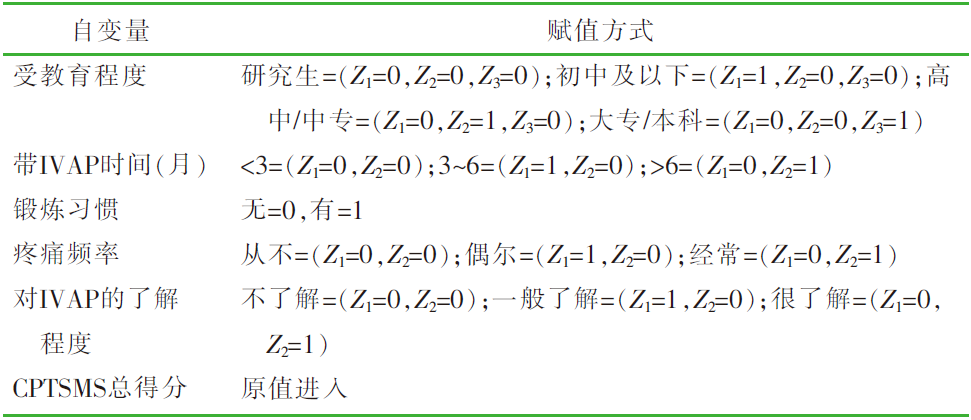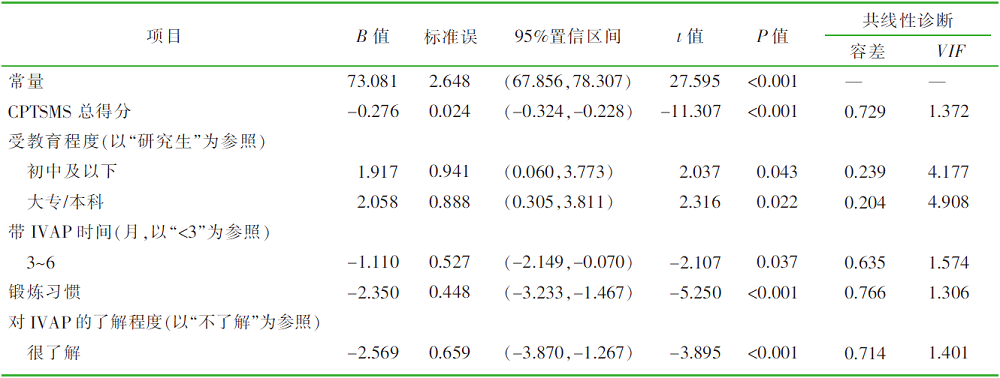| [1] |
Filho AM, Laversanne M, Ferlay J, et al. The GLOBOCAN 2022 cancer estimates:data sources,methods,and a snapshot of the cancer burden worldwide[J]. Int J Cancer, 2025, 156(7):1336-1346.
|
| [2] |
马力, 刘运江, 刘荫华. 中国乳腺癌中心静脉血管通路临床实践指南(2022版)[J]. 中国实用外科杂志, 2022, 42(2):151-158.
|
| [3] |
Nickel B, Gorski L, Kleidon T, et al. Infusion therapy standards of practice,9th edition[J]. J Infus Nurs, 2024, 47(Suppl 1):1-285.
|
| [4] |
Vlaeyen JWS, Kole-Snijders AMJ, Boeren RGB, et al. Fear of movement/(re)injury in chronic low back pain and its relation to behavioral performance[J]. Pain, 1995, 62(3):363-372.
doi: 10.1016/0304-3959(94)00279-N
pmid: 8657437
|
| [5] |
Lethem J, Slade PD, Troup JD, et al. Outline of a Fear-Avoi-dance Model of exaggerated pain perception:I[J]. Behav Res Ther, 1983, 21(4):401-408.
doi: 10.1016/0005-7967(83)90009-8
pmid: 6626110
|
| [6] |
Malchrowicz-Mośko E. Kinesiophobia among breast cancer sur-vivors one year after hospital treatment[J]. Int J Environ Res Public Health, 2022, 19(21):14565.
|
| [7] |
仇晓霞, 张学彬, 许立超, 等. 上臂完全植入式静脉给药装置临床应用专家共识(2022版)[J]. 介入放射学杂志, 2023, 32(1):2-8.
|
| [8] |
梁秋婷, 杨丽, 周溢, 等. PICC置管肿瘤患者恐动症现状及影响因素分析[J]. 护理学杂志, 2023, 38(6):59-62.
|
| [9] |
Parás-Bravo P, Paz-Zulueta M, Santibañez M, et al. Living with a peripherally inserted central catheter:the perspective of can-cer outpatients:a qualitative study[J]. Support Care Cancer, 2018, 26(2):441-449.
doi: 10.1007/s00520-017-3815-4
pmid: 28707169
|
| [10] |
国家卫生健康委员会医政医管局, 徐兵河, 马飞, 等. 乳腺癌诊疗指南(2022年版)[J]. 中国综合临床, 2024, 40(1):1-30.
|
| [11] |
陈彬. 医学多因素分析设计样本例数估算:多因素分析设计样本例数综合估算法[J/OL]. 伤害医学(电子版), 2012, 1(4):58-60.
|
| [12] |
Miller RP, Kori S, Todd D. The Tampa Scale:a measure of kinesiophobia[J]. Clin J Pain, 1991, 7(1):51-52.
|
| [13] |
胡文. 简体中文版TSK和FABQ量表的文化调适及其在退行性腰腿痛中的应用研究[D]. 上海: 第二军医大学, 2012.
|
| [14] |
吴孝红. 癌症患者输液港自我管理行为现状调查及影响因素分析[D]. 汕头: 汕头大学, 2021.
|
| [15] |
Wang YW, Qiu XX. Kinesiophobia and related factors in can-cer patients with TIAPs during the long term:a cross-sectio-nal survey[J]. Support Care Cancer, 2022, 30(6):4927-4934.
|
| [16] |
Chan R, Cooper B, Paul S, et al. Distinct financial distress profiles in patients with breast cancer prior to and for 12 months following surgery[J]. BMJ Support Palliat Care, 2022, 12(3):347-354.
|
| [17] |
Gunay US. The relationship between pain severity,kinesiopho-bia,and quality of life in patients with non-specific chronic neck pain[J]. J Back Musculoskelet Rehabil, 2019, 32(5):677-683.
|
| [18] |
Comachio J, Magalhães MO, Campos Carvalho E Silva APM, et al. A cross-sectional study of associations between kinesio-phobia,pain,disability,and quality of life in patients with chronic low back pain[J]. Adv Rheumatol, 2018, 58(1):8.
|
| [19] |
Bäck M, Caldenius V, Svensson L, et al. Perceptions of kine-siophobia in relation to physical activity and exercise after myocardial infarction:a qualitative study[J]. Phys Ther, 2020, 100(12):2110-2119.
|
| [20] |
Karadibak D, Yavuzsen T, Saydam S. Prospective trial of inten-sive decongestive physiotherapy for upper extremity lymphe-dema[J]. J Surg Oncol, 2008, 97(7):572-577.
doi: 10.1002/jso.21035
pmid: 18459131
|
| [21] |
黄蓉, 丁梅, 黄华华, 等. 运动自我效能在冠心病患者运动恐惧和体育活动量间的中介作用[J]. 中华护理教育, 2022, 19(12):1119-1123.
|
| [22] |
Aleem H, Qazi R, Azim ME, et al. Correlation of kinesiophobia and upper extremity parameters in post mastectomy patients[J]. J Pak Med Assoc, 2023, 73(7):1498-1501.
doi: 10.47391/JPMA.7170
pmid: 37469066
|
| [23] |
Luque-Suarez A, Martinez-Calderon J, Falla D. Role of kinesio-phobia on pain,disability and quality of life in people suffe-ring from chronic musculoskeletal pain:a systematic review[J]. Br J Sports Med, 2019, 53(9):554-559.
|
| [24] |
沈玉珊, 刘凤, 陈梦玲, 等. 冠心病患者运动恐惧发生率及影响因素的Meta分析[J]. 中华护理教育, 2024, 21(5):606-612.
|
| [25] |
Keessen P, Latour CM, van Duijvenbode ID, et al. Factors re-lated to fear of movement after acute cardiac hospitalization[J]. BMC Cardiovasc Disord, 2020, 20(1):495.
|
| [26] |
Wu FL, Howell D, Fang Q, et al. Trajectory patterns and factors influencing self-management behaviors in Chinese patients with breast cancer[J]. Cancer Nurs, 2020, 43(2):E105-E112.
|
| [27] |
Bandura A. Self-efficacy:toward a unifying theory of behavio-ral change[J]. Psychol Rev, 1977, 84(2):191-215.
doi: 10.1037//0033-295x.84.2.191
pmid: 847061
|




